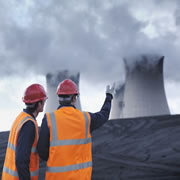- April 12, 2017
- Posted by: Catalyst
- Category: Business Energy News

A start-up company in Sydney is set to unveil the Chemical Looping Energy on Demand System, or CLES. If the new energy system lives up to its name, the device will outperform many of the current energy storage systems available on the market, including the duration of time it takes to pay for itself.
Collaborators Infratech Industries and the University of Newcastle created the CLES in an attempt to solve energy problems in Australia. The energy system generates both oxygen and hydrogen in addition to its other features, making the device more versatile than most traditional energy storage units.
Due to this, the CLES appears to overcome many of the typical issues associated with other energy sources and storage systems.
According to Rajesh Nellore, Founder and Chief Executive of Infratech, the energy system has the capacity to provide energy for approximately 30 homes and a steady supply of oxygen. He went on to say that the device’s features have attracted customers from a variety of industries, including apartment developers, food processors, hospitals, and age care homes.
Although potential sales appear to be underway, they are not expected to be finalised until April, after the formal inauguration. Pat Conroy, Newcastle Labor MP, is to attend the event on behalf of Bill Shorten, Leader of the Opposition.
If all goes according to plan, the new energy system is to be scaled-down into a compact size that will easily fit into residential houses.
The fridge-sized version of the CLES is expected to be fully developed within the next 18-months.
Suggested pricing for the system has not been disclosed as-of-date, however, Nellore stated that the CLES will easily pay for itself within approximately two years. “Given it’s going to be a two-year payback it’s quite economical from a consumer standpoint,” Nellore concluded. This estimation of time is five years faster than the approximate payback for rooftop solar.
Well-Rounded Efficiency
The CLES works by using an enclosed system to move compressed air through a patent-protected cartridge. Particles within the system are oxidized to generate heat.
From there, the hot air powers the turbine to provide energy. Afterward, the particles condense to produce oxygen or hydrogen based on the current settings. These by-product options make the new energy system a very versatile and lucrative device.
According to Infratech, the CLES has the ability to produce heat, power, oxygen, cold and hot water simultaneously.
Infratech went on to state that the device offers an overall energy efficiency of over 90%.
When the device is in the energy storage mode, the system charges the electricity akin to a battery, however, to run in the optional oxygen mode, the CLES requires gas as a fuel source.
According to Nellore, CLES has the potential to provide revenue to its owner if the oxygen production option is utilised in addition to the device’s heating and cooling features.
CLES has a peak output of 30 kilowatts. Total average energy production within a 24-hour time span is 720 kWh.
To compare, the daily average energy consumption for a household is approximately 18 kWh.
